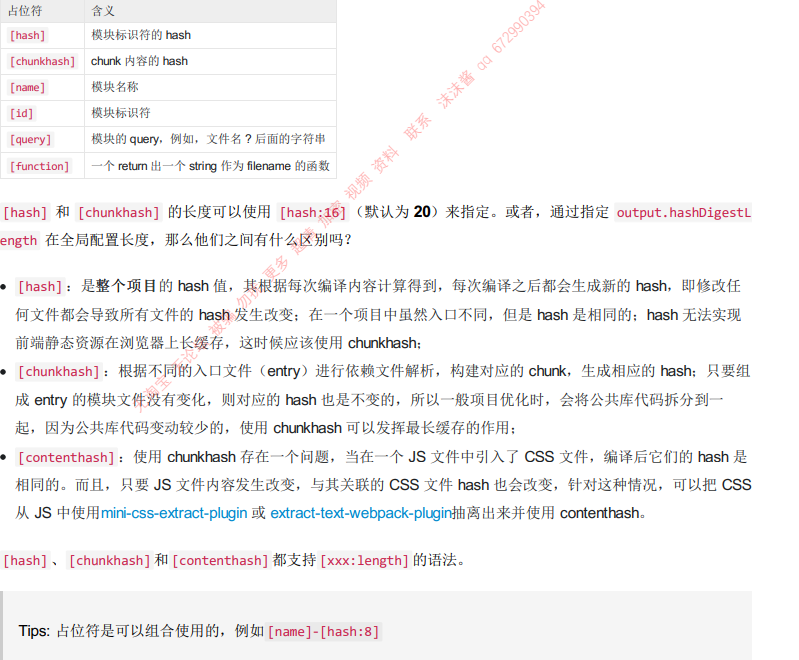[TOC]
基础概念和常见配置项介绍(一)

配置文件 webpack.config.js
const path = require("path")
module.exports = {
mode: "development",
entry: "./foo.js",
output: {
path: path.resolve(__dirname, "dist"),
filename: 'foo.bundle.js'
}
}
mode模式
- development 开发
- production 生产 :代码需要压缩,图片需要优化
1.在配置文件中设置
module.exports = {
mode:"development"
}
2.在命令行中设置
npx webpack --config webpack.config.entry.js --mode development
webpack 的入口(entry) 和 输出 (output)
webpack 从指定的入口文件开始,最终按照output设定输出固定内容的bundle。这个过程就用到了 loader 与 plugin , loader 是源代码的处理器,plugin解决的是loader处理不了的事情.
context
上下文,即项目打包的相对路径上下文。如果指定了 context=”/User/test/webpack” 那么我们设置的 entry 和 output 的相对路径都是相对于 /User/test/webpack 。context 值必须是一个绝对路径
module.exports = {
context:'/Users/test/webpack'
}
Tips:在实际开发中 context 一般不需要配置,不配置则默认为 process.cwd() 即工作目录。
单文件入口
单文件入口可以快速创建一个只有单一文件入口的情况,例如 library 的封装,但是单文件入口的方式扩展配置灵活性较低。
module.exports = {
entry:"path/to/my/entry/file.js"
}
//或者使用对象
module.exports = {
entry:{
main:"path/to/my/entry/file.js"
}
}
多文件入口
module.exports = {
entry:{
home:"path/to/my/entry/home.js",
search:"path/to/my/entry/search.js",
list:"path/to/my/entry/list.js",
}
}
Tips:对于一个 HTML 页面,我们推荐只有一个 entry ,通过统一的入口,解析出来的依赖关系更方便管理 和维护
output 输出
output 是指定了 entry 对应文件编译打包后的输出bundle.常用属性:
- path : 输出的 bundle存放的路径,比如 dist output 等
- filename: bundle的名称
- publicPath :指定了一个在浏览器中被引用的URL地址
Tips:当不指定 output 的时候,默认输出到 dist/main.js ,即 output.path 是 dist , output.filename 是 main
一个webpack的配置,可以包含多个entry,但是只能有一个 output 。对于不同的 entry 可以通过 output.filename占位符语法来区分
module.exports = {
entry: {
home: "path/to/my/entry/home.js",
search: "path/to/my/entry/search.js",
list: "path/to/my/entry/list.js",
},
output: {
filename: "[name].js",
path: __dirname + '/dist'
}
}
path/to/my/entry/home.js → dist/home.js
path/to/my/entry/search.js → dist/search.js
path/to/my/entry/list.js → dist/list.js

output.publicPath
对于使用

